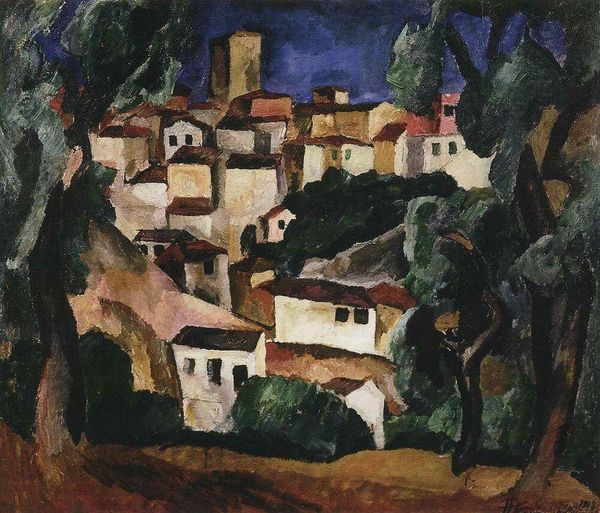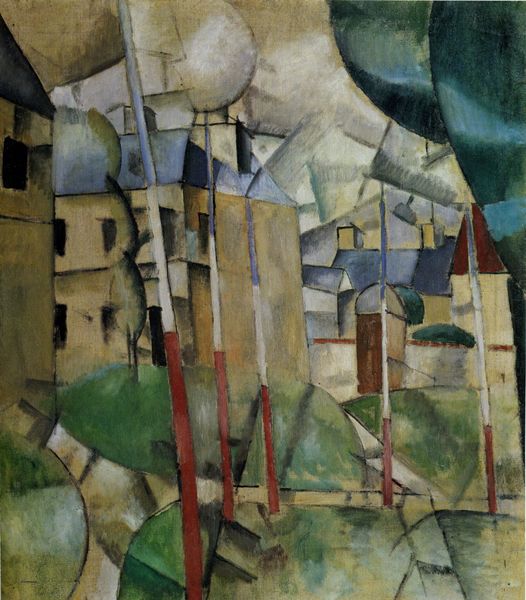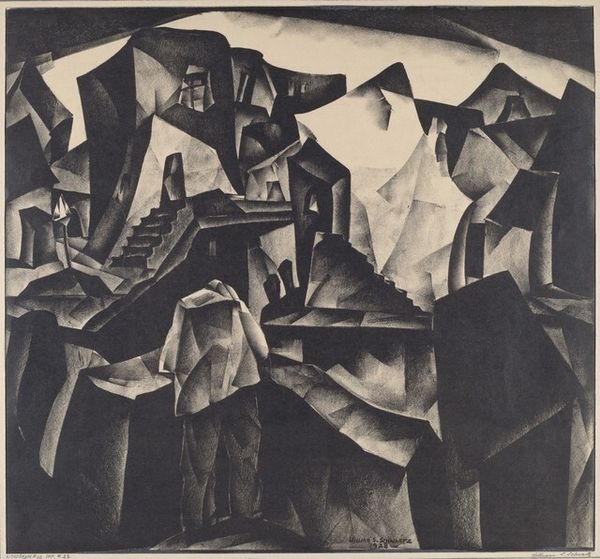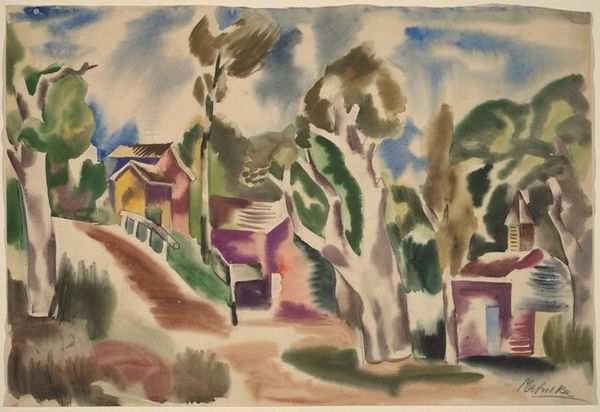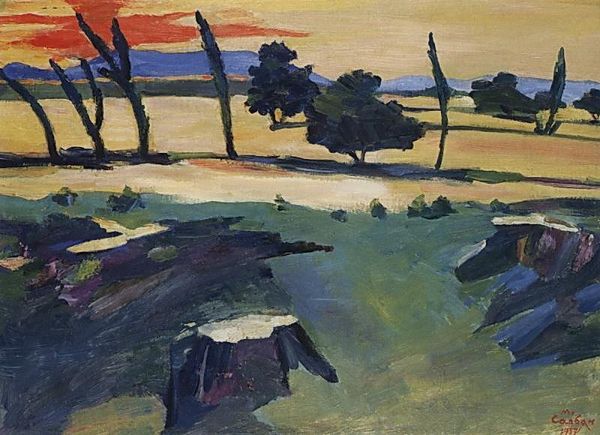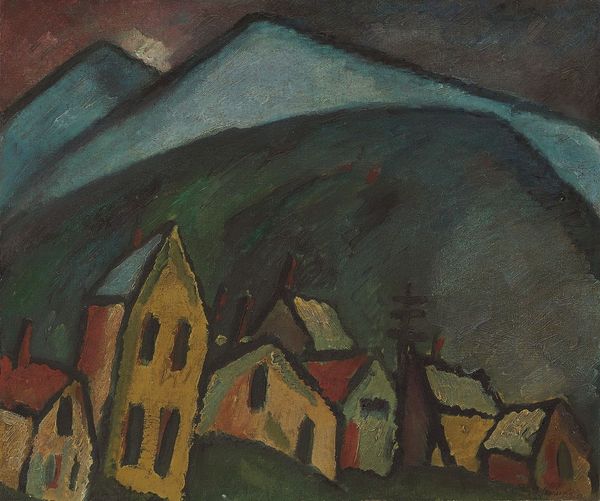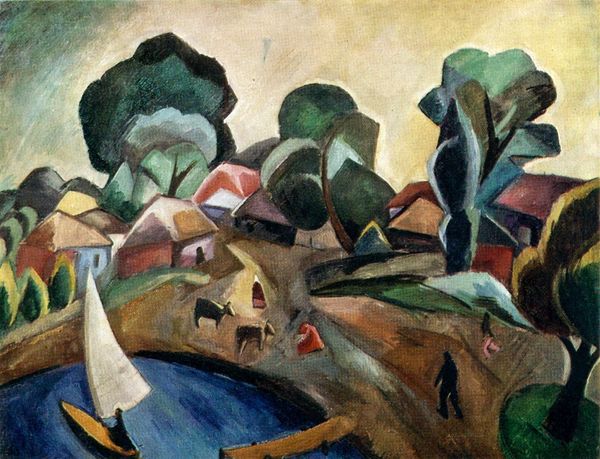
painting, oil-paint
#
cubism
#
abstract painting
#
painting
#
oil-paint
#
landscape
#
geometric
#
cityscape
#
building
Copyright: Public domain
Editor: We're looking at Roger de La Fresnaye's "Landscape at Ferté-sous-Jouarre" from 1911, an oil painting currently in a private collection. There's this interesting tension between the familiar—I recognize buildings and landscapes—and the abstracted, geometric forms. What's your take on this cubist landscape? Curator: I see a work deeply engaged with its historical moment. Early 20th-century Paris was grappling with industrialization, urbanization, and new technologies. Cubism, in its fractured representation of reality, becomes a visual language for understanding those shifts. De La Fresnaye isn't just depicting a landscape; he’s deconstructing it to reveal its underlying structures. Editor: So, the geometric shapes aren't just about aesthetics; they're making a point about the changing world? Curator: Precisely! Consider the buildings. Are they solid, stable structures, or fragmented reflections of a society in flux? Think about the relationship between humans and the built environment. Does this geometric style empower the artist, allowing them to dissect and rearrange reality, or does it dehumanize the subject? Also, are we, as the viewers, put into the position of colonial observers of the "new"? Editor: That's a powerful way to think about it. The fracturing could also be seen as a breakdown of traditional hierarchies, perhaps mirroring social and political upheavals. I initially saw this painting as a formal experiment, but now I am able to consider the intersection between representation and the evolving modern identity of its time. Thank you! Curator: Indeed! These visual tools were created to show their feelings and political statements in times when they otherwise may have had no voice. It's these tensions, the aesthetic choices made within a specific context, that create the richer understanding.
Comments
No comments
Be the first to comment and join the conversation on the ultimate creative platform.
